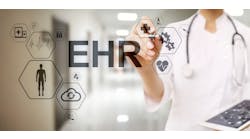Yesterday, Surescripts released its annual progress report on ePrescribing, which reported across the board increases in prescriptions being routed electronically, electronic responses to requests for prescription benefit information, and prescription histories being delivered to prescribers.
One of the reports most salient findings was the 72 percent rise in prescriptions being routed electronically from 191 million in 2009 to 326 million in 2010. The number of prescribers routing prescriptions electronically grew from 156,000 at the end of 2009 to 234,000 by the end of 2010—representing about 34 percent of all office-based prescribers. The report also showed prescribers favoring EMRs (79 percent) as the preferred method of prescribing, up from 70 percent in 2009, rather than using standalone ePrescribing software. Practices with 2 to 10 physicians led the way in ePrescribing, with family practitioners and cardiologists leading adoption. The report also noted that 91 percent of the nation’s community pharmacies accept ePrescriptions.
During the report briefing, Paul Uhrig, chief administrator and legal officer, and chief privacy officer, said that ePrescribing has benefited over the last three years from the increased role of federal government, with the release of the HITECH act and incentive programs offered through the Medicare Improvements for Patients and Providers Act (MIPPA). He noted that future drivers of ePrescribing and interoperable healthcare growth include Stages 2 and 3 meaningful use and reform efforts under the Patient Protection and Affordable Care Act (PPACA), which is set to grow the number of insured patients by 30 million. Also, in June 2010 DEA regulatory changes gave prescribers the option of issuing prescriptions for controlled substances electronically, which will require ePrescriber software to be certified specifically for controlled substances, as well as necessitate two-factor authentication.
Surescripts Chief Strategy Officer Scott Barclay laid out three main recommendations to continue to drive adoption:
- Drive utilization: continue to develop programs that provide education and tools to achieve meaningful use Stage 1, disseminate best practices
- Bridge adoption gaps: provide education and technical support to solo practitioners, independent pharmacies, and state Medicaid programs through RECs
- Promote clinical collaboration: support emerging quality based healthcare initiatives including ACOs and Patient-Centered Medical Homes (PCMH), which requires software technology and networking that support effective communication
Surescripts predicts that 2011 will be another watershed year for ePrescribing adoption and that by year’s end office based ePrescribing will be at 50 percent. In September Surescripts will release the state progress report, so regional differences with adoption can be further analyzed.

